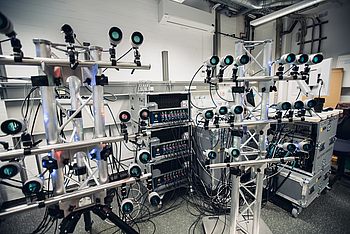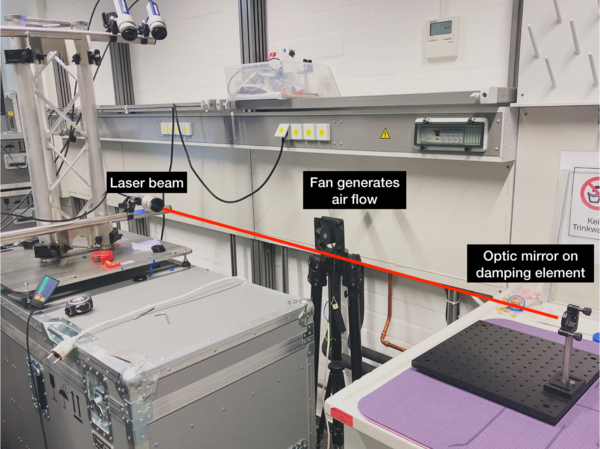Treatment of Optical Turbulence in Outdoor Laser-Doppler-Vibrometry
Motivation
- Turbulence in the Earth’ atmosphere results in both temperature and density variations coupled by the pressure equilibrium. These time-varying temperature inhomogeneities in the atmosphere subsequently also result in different densities. From an optical point of view, such irregular, random air movements mean a random variation of the refractive index of the atmosphere.
- The most significant and limiting optical effects caused by atmospheric turbulence are geometric distortion and space-time-varying blur.
- The turbulent atmosphere leads to the decreasing of the light coherence and destroys the coherent superposition, which leads to the great broadening effect of the beam profiles.
- Refractive index variations in the turbulent atmosphere cause an optical path difference between different parts of the wavefront, compromising data quality.
- Atmospheric turbulence as well locates many of the key design parameters of adaptive optics systems and interferometers, such as operating wavelength, aperture size, etc. It is therefore important to understand how atmospheric disturbances are generated and how their effects on light propagation can be quantified.
Objectives
- Exploring the influence of optical turbulence on the measurements.
- Finding means to minimize the influence of optical turbulence on the measurements.
Methods
- A major noise source of the attended techniques results from atmospheric refractive index fluctuations and speckle noise generated because the laser beam inevitably performs small movements on the surface. It is possible to suppress such noise sufficiently for high quality measurements with correlation LDV technique from different separated measurement beams.

Scientific Assistant
Tel.: +49 5323 72-4965
E-Mail: tolchkova@iei.tu-clausthal.de
![[Translate to English:] [Translate to English:]](/fileadmin/_processed_/b/2/csm_KT_MPV_1a049c53c4.jpg)
